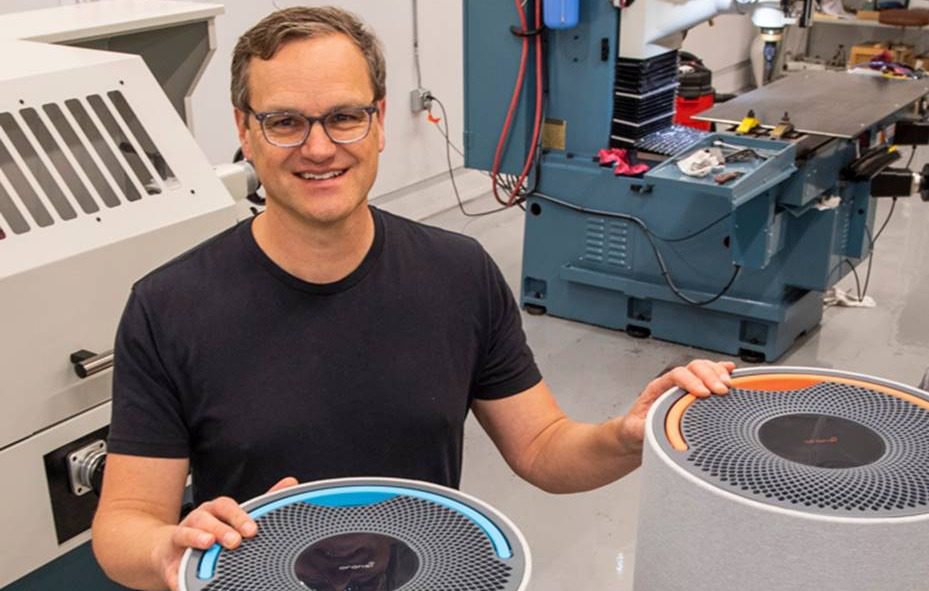Ask a sample of average American consumers if they prefer U.S.-made products and most will say yes, according to at least half a dozen surveys. But say you want them to pay a little more for it? That’s a different story, says Peter Mann, CEO of Oransi, which makes its indoor air purification products in China.
“They don’t want to pay any kind of premium for ‘made-in-America,’” says Mann, a U.S. Navy veteran and former Dell executive. “That’s kind of the problem with reshoring.”
For Oransi, as for so many U.S. manufacturers who currently outsource to China, product design makes it very difficult to replicate production in the U.S. “If you take apart a Chinese air purifier, it’s got a lot of parts, a lot of screws and assembly requires a lot of labor,” which is, of course, cheaper in China, says Mann. “So we can’t take that product and build it here and be remotely competitive.”
And he did try. Back in 2013, Oransi contracted with a Connecticut company to manufacture two Oransi-designed models, but those have since been discontinued. “The price and the cost were way too high,” he says.
But in 2021, Oransi merged with Aviemore Technologies, a maker of motion control products in Radford, Virginia, and Mann and Aviemore’s founder, Moe Barani, began redesigning the air purifiers from the ground up. It took two years of development, but they can now cost effectively manufacture stateside.
“We redesigned it with fewer parts so the assembly requires a lot fewer people, and we can assemble it much more efficiently,” says Mann, noting that even with China’s lower cost of labor and cheaper component parts, the new product’s price tag and higher performance will make it a clear favorite among customers.
Production is set to start in the next few months at the company’s 156,000-square-foot manufacturing facility in Radford, and, within the next year, the goal is to shift all manufacturing from China to the U.S. That will mean hiring approximately 100 new employees in assembly and engineering, but Mann says finding talent in the “electric motor hub,” as the area has been called, won’t be an issue. “We’re near Virginia Tech and there are a few other electronic motor companies in the area, so there’s a lot of knowledge here.”
Mann has some advice for leaders considering reshoring to the U.S.:
• Get clear on your goals. “[Ask yourself], what are we trying to achieve? Then work backwards to get there,” he says. “The key is, we live in a global world and there’s a lot of competition so, is there a path for you to innovate to be competitive manufacturing in the U.S.?”
• Is this something your customers care about? For Oransi, the answer to that question was yes, so he had to figure out how to make it work for balance sheet. “Our competitors in the U.S. that we’ll be going up against for performance are probably three times the price that we’re gonna be. We’re pretty excited about that because we’ve put so much time into it.”
• Reset expectations. Apples to apples, things will probably take longer and cost more in the U.S. than in China, especially in Shenzhen, where “you just go around the corner and you can find the suppliers or partners you need.” In the U.S., he notes, “we’re not there yet in terms of ease of access to either some of these components or just the willingness of companies to work harder and faster—so it takes longer and clearly costs more, as we’ve seen,” he says. “Hopefully it gets better as more reshoring takes place and there’s a little bit more infrastructure built out.” He also points out that labor in China isn’t as cheap as it used to be—but it’s still very hard for the U.S. to compete with a work ethic that values a seven-day workday over work-life balance.
That isn’t likely to change in the near future. So for now at least, companies that want to make product in the U.S. will need to simplify their designs and reduce the steps required for assembly. “Because you’re not gonna change the way people are wired here, right?” says Mann. “So you have to find a new, better way to do it here.”








